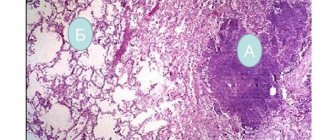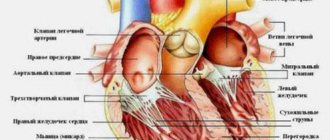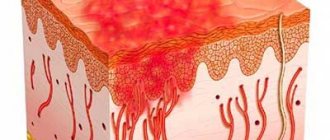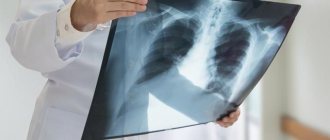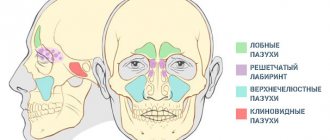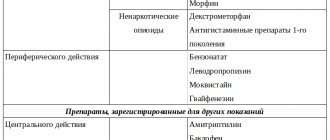Blood-borne infections are infectious microorganisms and viruses in human blood that can cause disease in humans. These pathogens include, but are not limited to, hepatitis B, hepatitis C, and human immunodeficiency virus (HIV). These pathogens can be transmitted through blood and other body fluids.
Contaminated needle sticks and other sharps-related injuries can expose workers to bloodborne pathogens. Workers in many professions, including health care workers, nurses, and other health care personnel, can all be at risk of contracting bloodborne pathogens.
Most bloodborne pathogens do not cause immediate illness, but they can still be passed on to other people. In addition, some bloodborne pathogens can cause death.
If your employees are at risk of contact with pathogens in a medical organization, you need our services. Find out more about occupational safety and health in medicine.
Infectious diseases: classification
There are several generally accepted classifications. Depending on the nature of the pathogen, the following are distinguished:
- bacterial infections (streptococcal, staphylococcal, pneumococcal, meningococcal and others);
- viral infections (influenza viruses, herpes, gastroenteritis, hepatitis);
- fungal (candidiasis);
- prion;
- caused by protozoa;
- helminthiasis and ectoparasitosis.
Classification that reflects the location of the pathogen accumulation (reservoir):
- zoonotic infections - the source is animals (pathogens of brucellosis, tularemia, anthrax and others);
- anthroponotic - source of infection in humans (for example, HIV, dysentery);
- sapronoses - infection occurs from the environment (gas gangrene, legionellosis).
According to the course of the disease there are:
- typical or atypical;
- light, medium and heavy;
- acute, subacute, chronic.
Based on the location of the pathogen in the body, diseases are distinguished:
- skin (herpes, papillomatosis);
- respiratory tract (flu, sore throat, diphtheria, whooping cough);
- blood systems (plague, hepatitis, HIV, typhus and relapsing fever, malaria);
- intestinal (salmonellosis, dysentery, cholera).
Why do you need to distinguish between viruses and bacteria?
In the autumn-winter period, the number of people with colds increases.
Respiratory infectious diseases are most often caused by viruses or bacteria. Pathologies provoked by such pathogens have similar symptoms. Therefore, it is very difficult to distinguish them. Meanwhile, it is necessary to determine the type of infection. This is important to do because:
- To combat a viral infection, antiviral drugs are prescribed, and in the case of a bacterial infection, antibiotics are prescribed. If the treatment is chosen incorrectly, it is difficult to talk about the consequences. Antibiotics turn out to be completely useless against viruses. And antiviral drugs will not help cope with bacteria.
- Lack of adequate treatment can lead to serious consequences. Some viral diseases (of course, we are not talking about the flu) can go away on their own, without any serious treatment. But it is impossible to suppress a bacterial infection without antibiotics. And in this case, the patient may develop serious complications.
Before you figure out how to distinguish a viral infection from a bacterial one, you need to understand what pathologies we are talking about.
Viral infection
According to statistics, acute respiratory diseases of the respiratory tract are caused by viruses in almost 92-98% of cases. Such illnesses last on average 10-14 days. During the first week, the patient complains of severe symptoms and fever. Then the acute phase is replaced by a recovery period, lasting from 3 to 7 days.
The following infections are classified as viral:
- rhinovirus (the virus affects the mucous membranes of the nose and nasopharynx);
- flu;
- adenoviral (this is a whole group of acute respiratory viral infections that affect the mucous membranes of the upper respiratory tract, watery eyes, and moderate symptoms of intoxication);
- parainfluenza (pathology causes moderate intoxication and damage to the larynx and upper respiratory tract);
- infectious mononucleosis (the disease is accompanied by high fever, acute sore throat and swollen lymph nodes);
- MS (respiratory syncytial) - (a disease affecting the lower respiratory tract);
- metapneumovirus (the virus affects the respiratory system and digestive tract, which is manifested by diarrhea).
Improper treatment of viral pathologies can lead to bacterial complications.
Bacterial colds
Such diseases are usually caused by bacteria that live in the human body. They are controlled by the immune system and are classified as opportunistic.
As soon as the body's defenses decrease, such bacteria begin to become active. They can affect the mucous membranes of the mouth, pharynx, and nose. Bacteria are able to penetrate the bronchi, sinuses, lungs, and trachea.
Severe hypothermia is more likely to cause a bacterial infection, so when wondering how to distinguish it from a viral infection, remember to look at the previous events.
A bacterial infection manifests itself as:
- sinusitis (sinusitis, sinusitis);
- laryngitis;
- acute tonsillitis (tonsillitis);
- otitis media;
- tracheitis;
- pneumonia;
- bronchitis.
Main routes of transmission and impact on them
In order to prevent a particular disease, you first need to know the route of its transmission. Let's look at the main ways of spreading infections:
- Airborne path. When a sick person exhales air containing germs. This happens when you cough, sneeze or blow your nose. A healthy person becomes infected by inhaling infected air. Viral and bacterial infections are mainly transmitted in this way.
- Fecal-oral route. Infection occurs through unwashed vegetables, fruits, hands, unfiltered, raw water. This also includes expired products and products that have not undergone sufficient heat treatment. This is how intestinal infections, hepatitis A, and zoonotic infections are transmitted.
- Transmissible. The pathogen enters the human blood through an insect bite.
- Parenteral. Transmission of the pathogen occurs through blood.
- Transplacental. Through the placenta from an infected mother to the fetus.
- Contact and household. Through direct contact with an infection, a contaminated object. These could be skin infections, helminthiasis, brucellosis.
How to distinguish a viral infection from a bacterial cold: 4 important nuances
The simplest and easiest way to determine the type of infection is to see a doctor. Doctors regularly face such questions, so they can recognize the pathogen with the naked eye.
But if they have doubts, experts will suggest taking tests:
- blood test;
- macroscopic analysis of swabs from the nose and throat;
- rapid tests for influenza virus and streptococcus.
To independently recognize the type of infection, doctors advise paying attention to the following points.
Mucus discharge
A cold is often accompanied by a runny nose and cough. Be sure to take a closer look at nasal discharge and phlegm that comes out when you cough.
The following features will help to recognize pathologies:
- Viral infection . This pathogen is characterized by liquid, transparent discharge. Most often they are serous.
- Bacterial . The discharge is thick. They are green or brownish. Yellow-brown mucus usually indicates the presence of pus.
Temperature
Both types of infection may be accompanied by a high fever. Therefore, it is important to pay attention not to indicators, but to the following points:
- Viral . The temperature rises immediately. The moment of onset of the disease is clearly defined. The high temperature lasts for several days. Then it decreases.
- Bacterial . Develops gradually. Sluggish start. The temperature increases over several days.
Locus of the lesion
To determine the type of infection, you need to listen to your body and recognize what hurts.
Doctors note the following features:
- Viral . The lesion site is not determined. Everything hurts (throat, nose, chest, muscles, head).
- Bacterial . A person can say for sure that he is worried about his throat (with a sore throat), bursting pain in the sinus area (sinusitis), severe chest pain and cough (bronchitis, pneumonia).
Duration of flow
There are several more characteristic features that help determine the type of infection:
- Viral . Improvement occurs approximately on the 5-7th day.
- Bacterial. There is still no positive dynamics at this time. With a bacterial infection, the condition may worsen after visible improvement.
To determine the type of infection, it is necessary to analyze all the points described above. It's best to consult a doctor. In this case, the risk of misdiagnosis can be minimized. This means protecting your body as much as possible from serious complications.
Source https://www.medsovet.info/
Prevention of airborne infections
We have already figured out how an infection can enter a healthy human body. What to do to prevent airborne infection? There are generally accepted preventive measures for this:
- ventilation, wet cleaning and disinfection of premises;
- active participation in any sport;
- maintaining personal hygiene;
- isolation during an unfavorable epidemiological situation, as well as reducing contacts with infected people;
- use of personal protective equipment.
Prevention of fecal-oral infections
Rules that will help avoid infection through the fecal-oral route are as follows:
- treating your hands with a disinfectant or soap solution immediately upon arrival from the street, before eating and after visiting the toilet;
- prevent ingestion of raw water from reservoirs;
- try not to leave cooked food on the table for a long time;
- strictly monitor the proximity of raw and ready-to-eat products;
- compliance with expiration dates of food products;
- do not store finished products in the refrigerator for more than five days;
- thermally process raw foods;
- Drink only filtered and ready-to-drink water.
Prevention of vector-borne, parenteral and transplacental infections
Diseases transmitted through blood, like other routes, require strict adherence to the rules of prevention:
- in the spring-summer period, limit your stay in parks, forests and other places with a large number of plantings;
- if possible, avoid visiting equatorial countries;
- visit proven beauty salons, where disinfection and sterilization are carried out accordingly;
- pregnant women should lead a healthy lifestyle and adhere to the instructions of the attending physician;
- If the expectant mother already has a history of an infectious blood disease, then to preserve the health of the fetus, it is recommended to choose an operative method of delivery.
Prevention of household contact infections
To prevent infections associated with household contact transmission, simple rules should be followed:
- regular disinfection of publicly accessible items;
- have an individual set of personal hygiene items and observe hand hygiene;
- refuse casual sexual intercourse, use protection.
Medicines cannot always protect against infection. First of all, you need to take responsibility for your health.
Fecal-oral transfer
A common method of transmission of infection. In essence, this is a pathogen transmission mechanism when a pathogenic microorganism is localized in the gastrointestinal tract. It can come to the surface either with feces or with vomit. At the same time, it lasts for a long time. Infection occurs mainly through dirty hands (this means even invisible skin contamination, for example after playing in the ground or with animals) or contaminated water or food.
You can become infected in this way through contact with objects touched by the patient - linen, food, dishes, etc., as well as through unprocessed foods - unboiled milk, raw meat, unwashed vegetables, etc.
Article on the topic
Wait for the second wave and keep your head down. When will there be a cure for COVID-19?
General signs of infectious diseases
Infectious diseases have a similar pattern of onset of the first symptoms. When infected with a pathogen, general intoxication occurs in the body as a response to changes. Typical manifestations include: fever, chills, feeling tired and unwell, muscle weakness, headache, nausea, sleep cycle disturbances, loss of appetite.
With some infections, a rash may appear on the skin. Sometimes it has a specific character and this makes the diagnosis easier. A characteristic sign of a respiratory infection is coughing and sneezing, sore or sore throat, and hoarseness. If you have these symptoms, it is important to use personal protective equipment to avoid spreading the infection to others. Stomach upset is common.
Prevention of infectious diseases
We have already discussed nonspecific disease prevention depending on the route of entry of the pathogen into the body. General measures include: hardening, getting rid of bad habits, healthy eating, sports, protecting the ecology of the area, strict adherence to personal hygiene rules, sufficient food processing, ventilation and walks in the fresh air.
In medical practice, two types of specific immunoprophylaxis are used: active and passive. After active vaccination, the human body becomes virtually immune to a specific disease. Namely, the one whose antigens were used for vaccination. To do this, the pathogen antigen is introduced in minimal quantities, which promotes the formation of specific antibodies. These antibodies fight and protect the body during subsequent repeated contacts with the infection. Passive vaccination is an emergency method when ready-made antibodies against a disease are introduced into the body. This method is used when there is a suspicion of a particular infection (for example, if tetanus is suspected). It is important not to self-medicate, but to see your doctor for a diagnosis and further instructions.
1.What is sepsis?
Sepsis
is a serious disease caused by a suppressed immune response to infection. The more commonly known common name for sepsis is blood poisoning. To fight infection, the body produces chemicals that can cause severe inflammation throughout the body. This inflammation can in turn lead to organ damage.
Blood clotting in sepsis reduces blood flow to the limbs and internal organs, depriving them of nutrients and oxygen. In particularly severe cases, the infection leads to a life-threatening drop in blood pressure. This condition is called septic shock
, and it is really very serious. Septic shock can quickly lead to multiple organ failure—the lungs, kidneys, and liver—causing death.
A must read! Help with treatment and hospitalization!

